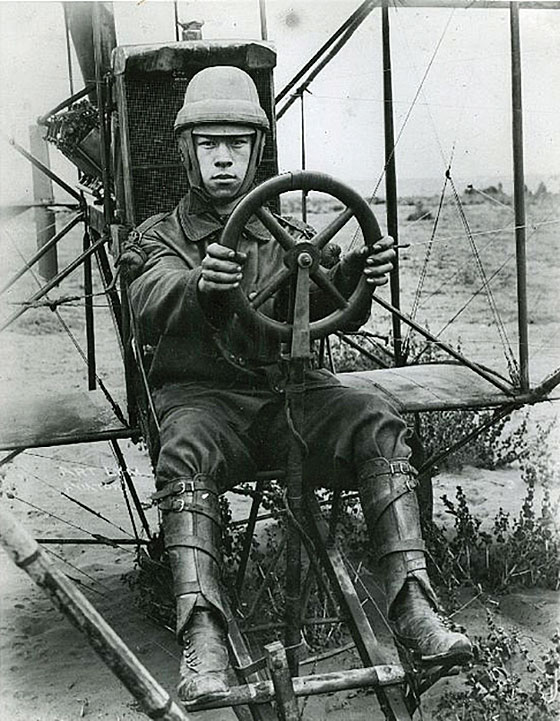Historical Spotlight
(Also please see our more comprehensive listing of notable people).
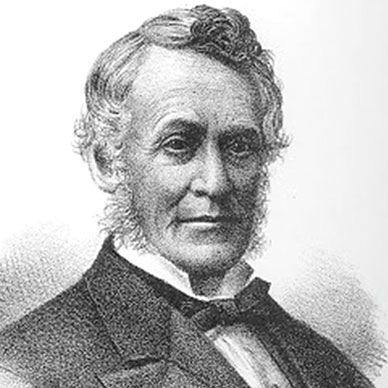
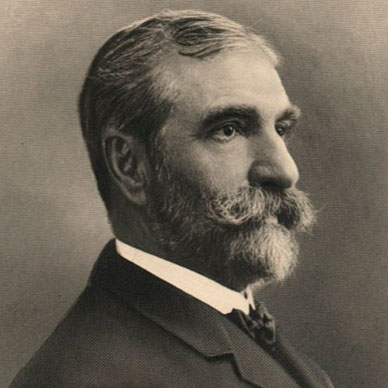
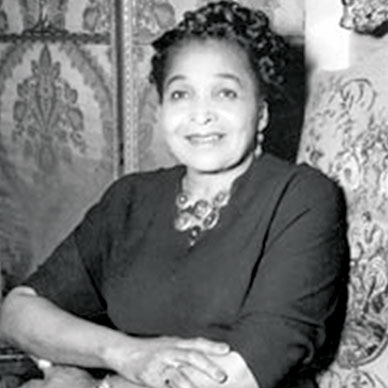
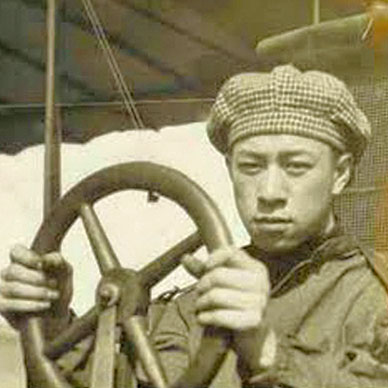
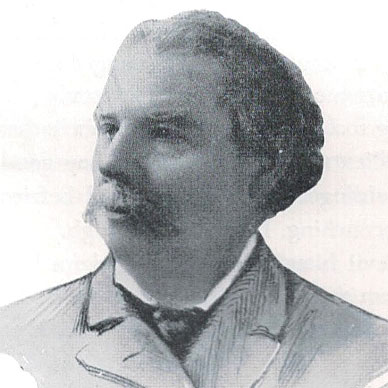
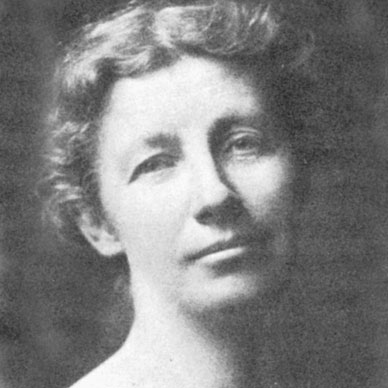
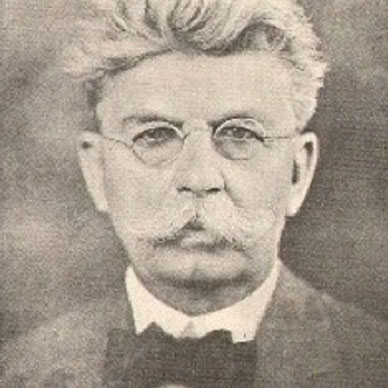
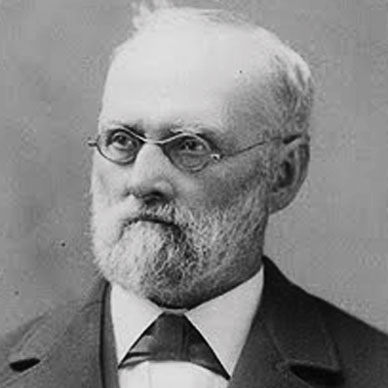
Founding Trustee: Addison Crane (1814–1887)
By Michael Colbruno and Dennis Evanosky
Addison Crane was among the founders of Mountain View Cemetery. He was at Samuel Merritt’s home on December 26, 1863, as one of the frst members of the cemetery’s board of trustees.
Crane was born in New York in 1814. At age 17, he began teaching school during the winters and also studying. He had become interested in law while listening to legal cases being argued in his father’s home.
In 1835, he moved to Alleghany County, New York, where he went to work for the law frm Benedict Lagley. By July 1841, he had earned his license to practice in the Supreme Court and the Court of Chancery of the State of New York.
In October 1839, Crane married Gertrude Ashley and started a large family. In 1843, the family packed up and moved to Lafayette, Indiana. Crane became a law partner of Daniel Mace, and later of Edward H. Brackett.
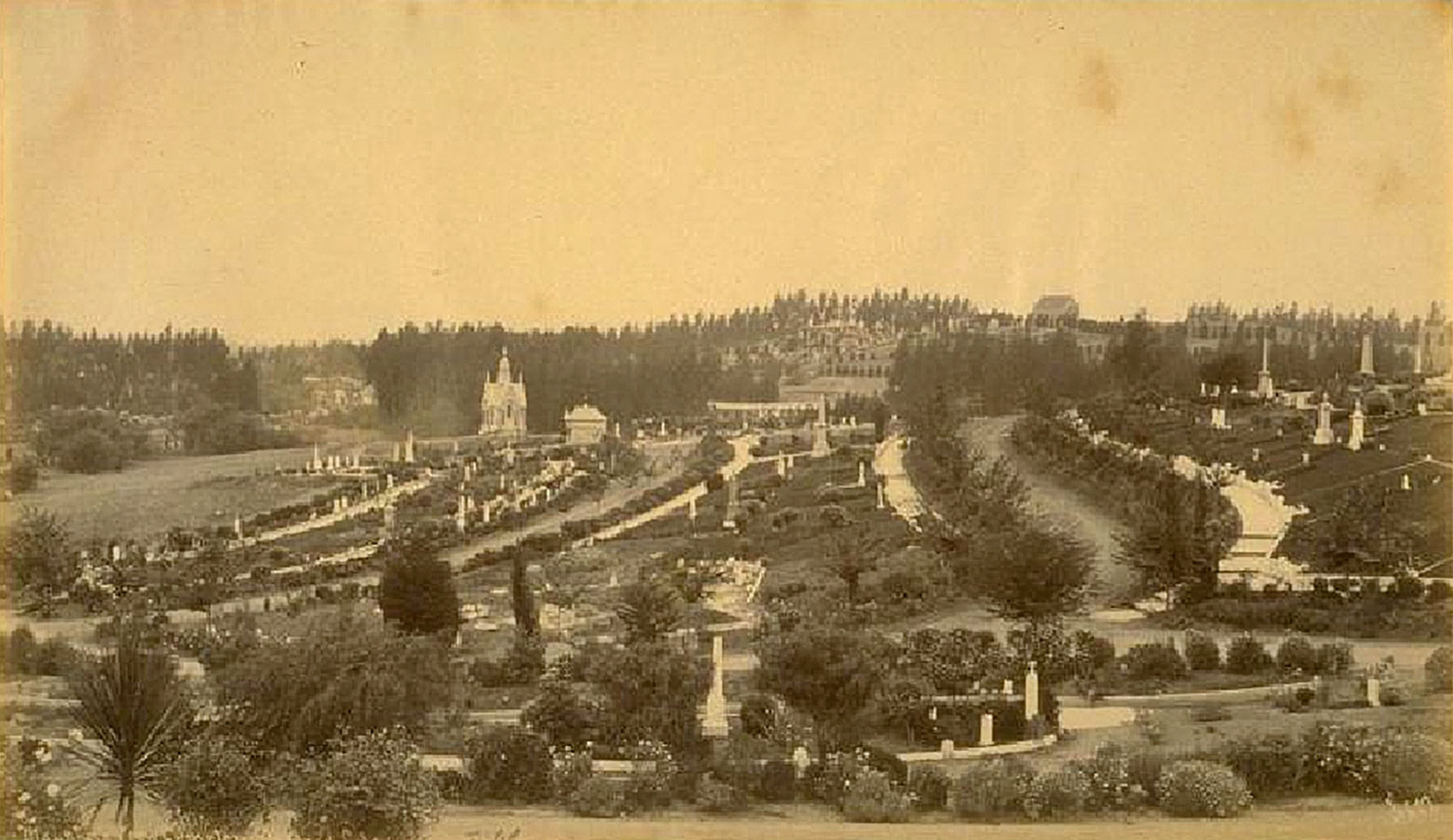
Historic photo of Mountain View Cemetery taken in 1930.
In January 1847, he was elected as Judge of the Court of Common Pleas, which heard civil cases. It was abolished by the new constitution of Indiana in 1851. Crane decided to take a trip down the Wabash, Ohio and Mississippi Rivers and ended up in New Orleans. The following year he decided to travel to California and he eventually ended up in San Lorenzo — then known as Squatterville.
He tried his hand at farming but was drawn back to the law and politics. In 1853, Alameda County was formed out of portions of Contra Costa and Santa Clara counties. In April of that year, elections were held and Crane was elected the frst County Judge of Alameda County, serving from 1853 to 1857. In October 1853, his wife and six children joined him after sailing around Cape Horn. He and Gertrude settled in Hayward and had three more children. As a judge Crane often ruled against Horace Carpentier, a notorious fgure in Oakland history, who used his legal training to deviously obtain titles to desirable land. Crane believed that Carpentier had transcended his rights. In protest, Carpentier and his associates then set up cabin in the middle of Broadway Street, but squatters and other settlers compelled him to remove it.
The year 1861 was good to Crane politically, but disaster struck when his house burned to the ground when his children attempted to smoke a mouse out of a hole in the attic. He still managed to get elected as a Republican to the California State Senate. Two years later, he was elected as a member of the Union Party and was elected as President pro tempore of the California State Senate.
Crane was a vocal opponent of discrimination and supported the women’s suffrage movement. In 1867, at the Union County Convention, he offered a resolution that called for an end to discrimination against the “…better educated of the colored people in this State.” He also promoted a concealed weapon law driven by fear over escalating tensions between pro-slavery and anti-slavery forces.
On the floor of the Senate he railed against slavery, “An institution, sir, wicked in its inception, cruel, relentless and unpitying in all its forms, degrading alike to all classes, making honest labor a dishonor, merchandise of the bodies and souls of men, shutting out the light of the advancing civilization of the age, and reducing to mere chattels the laborers who till the soil. This institution of human slavery is the great black ulcer which has eaten the vitals of our national existence, through the ignorance and darkness which it carries in its train. Without this, and its attendant consequences, we should have had no rebellion, no war, no such attempt as now exists to overwhelm in blood and slaughter this great and free Government.”
Addison Crane died in Oakland of pneumonia on October 21, 1887. He rests with his family in Plot 1, lot 312.
Addison Crane’s story will be among those recounted in Michael and Dennis’ new book “Lives of the Dead at Mountain View Cemetery.” The book is available at Mountain View Cemetery.
Dr. Ida Louise Jackson
(Oct. 12 1902 – March 8, 1996)
Teacher, Activist,and Eighth International President of Alpha Kappa Alpha Sorority, Inc.
Source: biographical information and image from Mountain View Cemetery brochures and OaklandWiki.
On August 2, 2014 at Mountain View Cemetery, the Far Western Region of Alpha Kappa Alpha Sorority, Inc. honored the life and legacy of its former international president, Dr. Ida Louise Jackson. The wreath-laying ceremony and the reception following was facilitated by Mountain View Cemetery’s Family Service Counselor Gloria Beadle.
A Mississippi native and daughter of a slave, Dr. Jackson became the frst African-American hired to teach in the Oakland Public Schools after continuing her education at UC Berkeley, where she earned her master’s degree. While at Berkeley, she co-founded the Rho chapter of Alpha Kappa Alpha, the frst African-American sorority at the university. She later earned a doctorate from Columbia University. She was especially known for her work in inspiring students to volunteer in poverty-stricken areas of the U.S.
Dr. Jackson was also active in public health, and was the founder of the Mississippi Health Project, which brought medical care to rural Mississippi. She was the general director during the eight years of the initiative’s operation. Over 4,000 children and many adults received care in mobile clinics, which traveled from plantation to plantation throughout the state. As international president of her sorority (the 8th Supreme Basileus reference on her marker), she also started a program to train rural teachers during the Great Depression in 1934.
In 1979, Dr. Jackson donated her ranch to UC Berkeley, specifying that the proceeds of its sale be used as graduate fellowships for black students pursuing degrees there.
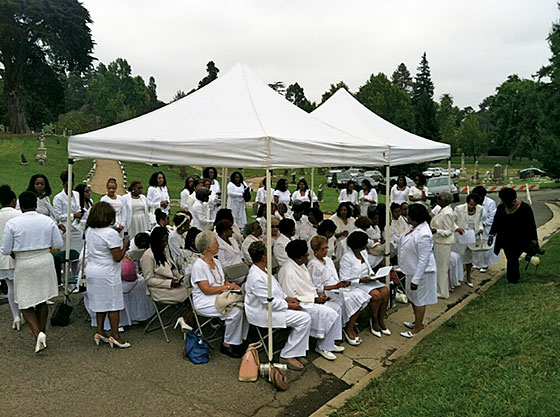
Dr. Jackson was the frst African-American teacher in Oakland Public Schools and one of the frst African-American women to be certifed to teach in the state of California.
All that attended the memorial service for Dr. Jackson were dressed in white. There were memorial services held throughout the world for the deceased former Supreme Basileus of Alpha Kappa Alpha Sorority, Inc.
Nathan Weston Spaulding
(1829–1903)
Born in Maine in 1829, Nathan Weston Spaulding was the son of a teacher and “practical mechanic.” The oldest of eight boys, he spent his formative years on the East Coast, where he learned the trades of carpenter, builder, and millwright prior to moving to California in 1851. Spaulding worked at several sawmills in Northern California before opening his own shop in Sacramento in 1859. Although his primary focus was on manufacturing and repairing saws, he eventually invented his own type of saw with adjustable teeth. The saw allegedly revolutionized the circular saw and made Spaulding a household name. He later invented a chisel-bit saw-tooth used in dentistry.
In 1861, Spaulding moved his factory to San Francisco and in 1865, with C. P. Shefeld and James Patterson, created the Pacifc Saw Manufacturing Company, which manufactured and sold all types of saws.
In 1868, Spaulding and his family settled in Oakland, where he served on the city council prior to being elected mayor for two terms from 1871 to 1873. In 1881, President Garfeld appointed Spaulding to the position of Assistant United States Treasurer of San Francisco, an ofce he held from 1881 to 1885.
Oakland was Spaulding’s adopted city and he cared deeply for it, giving freely of his time and money. During his terms as mayor, he donated 100% of his salary to charity. Spaulding was also active in Free Masonry and was elected six times as Master of Oakland Lodge #188, enjoying the close friendship of his masonic brothers Enoch Pardee and his son George Pardee, both of whom went on to have political careers. In addition, Mr. Spaulding served on the frst board of the trustees of Stanford University, being a close friend of Leland Stanford.
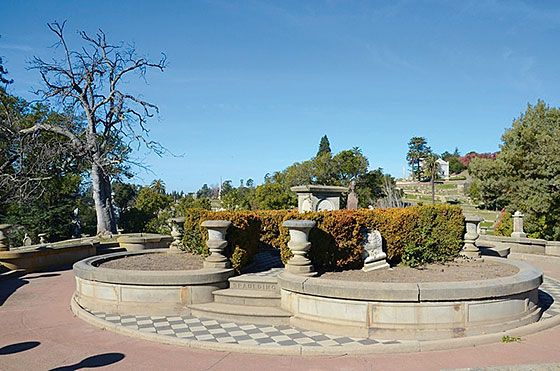
Spaulding and his family are interred in plot 6 of Mountain View Cemetery.
A carpenter by trade, Nathan Weston Spaulding invented several specialty saws that made him a household name. He went on to serve as a two-term mayor of Oakland, assistant treasurer of the U.S. Mint, and founding master of Oakland Lodge 188 F & A.M.
Francis Marion “Borax” Smith
(Feb. 2, 1846 – Aug. 27, 1931)
Miner, Businessman, Civic Leader
Source: biographical information and images from Wikipedia, OaklandWiki.
Wisconsin native Francis Marion “Borax” Smith was a miner, businessman, and civic leader who settled in the Oakland area in 1881. He made his fortune in borax mining, but also invested locally in real estate. He’s best known in Oakland for his contributions to civic infrastructure, creating the Realty Syndicate, which developed many of Oakland’s neighborhoods, and for the Key System, a streetcar and ferry system, which provided transportation in Oakland, Berkeley, Piedmont, and across the bay to San Francisco.
Mining for Borax
Smith spent time mining in Idaho, Nevada, and California. In 1872, while living in Nevada, he discovered a large borax deposit and started a borax company with his older brother Julius. Until then, the world’s known supply of borax had been relatively small, and thus, expensive (it sold for 35¢ per lb). Smith’s mine soon became the world’s largest source, and drove down the price to around 3¢ per lb, making it affordable for much wider commercial use, most notably as a cleanser. He later bought out his brother, acquired an additional borax mine in Death Valley in 1890, and added the famous “20 Mule Team Borax” brand name in1892 (which was indeed based on a twenty mule team). He eventually made a fortune of approximately $25 million (equivalent to more than $600 million in 2011).
Real Estate and the Key System
Smith bought his frst Oakland streetcar line in 1890. In 1895, he formed The Realty Syndicate with Frank C. Havens. Their primary goal was selling real estate; the streetcars were a way to get customers out to the neighborhoods to see and purchase it. By 1902, Smith had consolidated various streetcar lines to form the Key System. Many of Oakland’s urban paths and stairways were constructed during this period to connect various neighborhoods to the burgeoning Key System and further real-estate sales.
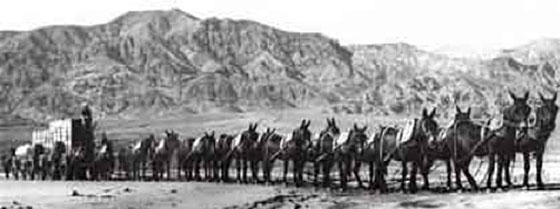
Smith developed the Key System streetcar and ferry lines, the forerunner to AC Transit. He is buried at Mountain View Cemetery along “Millionaires Row.”
Edward Payson Heald
(1843–1925)
Edward Payson Heald was born on Feb. 5, 1843 in Lovell, Maine. He spent his youth in Maine where he eventually became an instructor at the Portland Business College. Although young, Heald was highly regarded among both the faculty and students.
In 1863, at the age of twenty, Heald traveled to San Francisco, California. Upon his arrival, he began working to establish Heald Business College, the frst institution of its kind in the western part of the United States. His ability as a teacher and executive helped Heald Business College to become a leader in the educational and business activities of the west.
Heald was an educational pioneer in many ways, particularly women’s education. Heald Business College was one of the frst schools that afforded women the opportunity to gain practical business training and played a major role in paving the way for women to enter into the business world. Also, as the industries of the world changed, Heald Business College changed along with them, introducing the study of the various branches of engineering, mining, and even automotive repair to the course catalog. Heald College’s mission was, and continues to be, to prepare students for successful careers by providing them with career education that focuses on practical, hands-on learning.
Heald College has persevered since 1863, weathering two major earthquakes and two World Wars, always remaining true to its original mission. As the needs of the workplace have changed, the Heald College curriculum has evolved from business courses to include technology, healthcare, and legal degrees.
In addition to the establishment of the college that bears his name, Heald was also heavily involved in philanthropy and lent his influence and co-operation in support of efforts promoting the general good of the community. He was involved in agriculture throughout the state, including the operation of a large raisin vineyard near Fresno and a fne stock farm in Napa County, where he made a specialty of breeding high-grade roadsters, trotters, and carriage horses. He also served as president of the Pacifc Coast Trotting Horse Breeders’ Association. Heald passed away in 1925 and is widely regarded as a pioneer of education in the state of California. Heald College continues today with 12 campuses throughout California, Oregon, and Hawaii and celebrates its 150th anniversary this year.
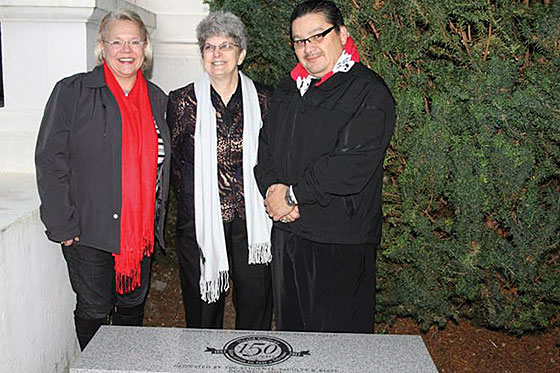
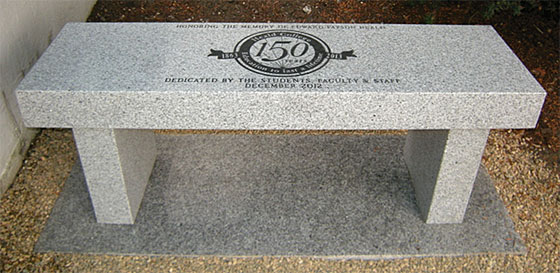
Edward Payson Heald, founder of Heald College, is considered a pioneer in education.
On Dec. 14, 2012, the Heald College leadership team dedicated a marble bench to its founder Edward Payson Heald. The dedication kicked off a year-long celebration of Heald College’s 150th anniversary. The bench, inscribed with the school’s 150th logo and the words “Heald College, 1863 to 2013 – Education to Last a Lifetime,” honors Heald, who is interred at Mountain View Cemetery
Art Lym
(1890-1962)
Art Lym was a pilot who trained under the Wright brothers and helped pioneer aviation in China. According to the July 15, 1913 issue of the Washington Post, he was China’s frst aviator. He later headed the Chinese Air Force.
Lym was born in San Francisco on December 27, 1890. After the 1906 earthquake he moved across the Bay to Oakland with his sister and her husband. He began his career in the newspaper business, writing and managing the Chinese World (Sai Gai Yat Po) newspaper.
In 1913 Lym was sent to the Curtiss Aviation School in San Diego fnanced by wealthy Chinatown benefactors. He earned his license with the Aero Club of America, becoming one of the frst two Chinese-Americans to obtain a license. Concern for his own safety led Lym to install a Sperry gyroscope stabilizer, which the U.S. Navy subsequently adopted.
Lym accepted a commission from Chinese President Yuan Shu-kai and set off to China. He became the director of the Pukou Flight School in the city of Nanjing where he gave demonstrations in bomb-dropping and air scouting. Lym’s appointment was due as much to his skill as a pilot as it was to his political afliations with the Baohuanghui, a political party active in China between 1913-1916 that operated on a platform of constitutional monarchy and peaceful reform. Lym would later become director of the Aviation Board of the Ministry of War.
With his childhood friend Tom Gunn he organized the Canton Air Corps and launched an aerial assault on bandit strongholds on Hainan Island, recapturing the area for China’s Guangdong province, located in the southern part of the country. In 1920 he led the frst-ever aerial bombing raid on the City of Canton, defending the city against invaders from the neighboring Kwangsi region. (Incidentally, Kwangsi Province would eventually join the People’s Republic of China in 1949, and later become an autonomous province of China in 1958).
Lym died in Hong Kong of heart failure in 1962 at 72 years of age. His fnal resting place is in Mountain View Cemetery’s Garden Mausoleum.
Including the operation of a large raisin vineyard near Fresno and a fne stock farm in Napa County, where he made a specialty of breeding high-grade roadsters, trotters, and carriage horses. He also served as president of the Pacifc Coast Trotting Horse Breeders’ Association.
Heald passed away in 1925 and is widely regarded as a pioneer of education in the state of California. Heald College continues today with 12 campuses throughout California, Oregon, and Hawaii and celebrates its 150th anniversary this year.
Born in the U.S., Art Lym accepted a commission that took him to China, where he pioneered aviation. He also invented a safety protocol that was later adopted by the U.S. Navy. Art Lym served as head of the Chinese Air Force.
Anna Head (1857–1932)
Owner and Director of the Anna Head School (now the Head-Royce School)
By Ruby Long, Mountain View Cemetery Docent
Anna Head, whose father, Edward, was a judge in Boston, came to Oakland in 1861 when she was four years old. Her father opened a law practice there and her mother, Eliza, established a school where classes were held in both French and English.
Anna spent her high school years at Oakland High School and got her diploma in 1874. That fall, she entered UC Berkeley, and she studied there until she graduated in 1879. After that, she began several years of travel in Europe. She was particularly drawn to Greece and spent a great deal of time there studying classic literature and art and developing her own ideas about education for women.
Shortly after Anna’s return to Oakland, her mother retired from teaching and the two of them worked together to open a new school—this one run by Anna. The Anna Head School began admitting students to grades 1 through 12 in 1888. The original location, at Dana and Channing streets in Berkeley, was chosen no doubt because of its proximity to the University of California. Indeed, some of the early information about the school mentions the availability of University events. Many of the graduates went on to become students at University of California, Berkeley. In 1892 the school moved to Bowditch Street between Channing and Haste Streets, where it remained until 1964. The original building, which has been moved to the Oakland Hills to become part of Head-Royce School, is in the National Register of Historic Places.
As the director of this school, Anna had a strong influence on the girls who became students. Her major focus was to develop character, and she insisted upon orderliness and consideration for others. She ran the school as a democratic model by interacting with several student committees and insisting upon simplicity of dress among the students. Anna Head School accepted both day as well as boarding students, and girls came from as far away as the East Coast to attend. Anna Head remained the owner and director for this influential school for 21 years and lived to see many of her students go on to achieve greatness in a variety of felds. She died on Christmas Day in 1932 at age 75. You may visit her gravesite at Plot 6, Lot 174.
Ruby Long, a new docent at Mountain View Cemetery, is a retired school counselor and started the “Reading Partner Program” 15 years ago in the East Bay’s Piedmont community. “My love for education led me to research and write about Anna Head for this issue’s notable person,” reported Ruby.
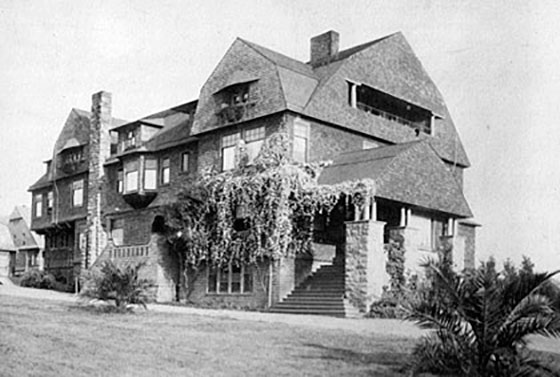
The Anna Head School at its original location on Channing Way in Oakland.
Anna Head was the owner and director of the Anna Head School for 21 years.
She had a strong influence on the girls who became students.
Anthony Chabot (1813–1888)
By Ruby Long, Mountain View Cemetery Docent
Anthony Chabot, originally a sailmaker, came to California in 1849 from Canada to work in the goldfelds. When not seeking the elusive gold, he built water ditches to supply Nevada City area mines with water. After about 10 years of long days spent bent over streams to collect nuggets, he began thinking about easier ways to get to the valuable gold—often found deeper in the earth.
One of his fellow miners, Eli Miller, had been a tinsmith before he came to California, and the two began to talk about how to make efforts in gold mining less difcult. By March 1853, they had a plan. Chabot took a long strip of canvas and sewed it into a tube. Miller fashioned a nozzle from sheet iron, fastened it to the end of the tube, and hydraulic gold mining was born. By forcing a powerful stream of water through the tube, they could wash away the soil that held the gold in its grasp.
In very little time, they were both wealthy men—and rich enough to leave the difcult life of the mining camp. They left behind, however, a scarred landscape. The process of hydraulic gold mining had a devastating effect on the environment by choking the streams and rivers with silt and rocks all the way to the Central Valley and San Francisco Bay. The effects can still be seen, 150 years later, in the bare, eroded cliffs of places like Malakoff Diggins State Historic Park (the site of the country’s largest hydraulic gold mining operation), not far from Nevada City.
Chabot came to San Francisco in 1856 and soon began having an effect there too, but a more benign one than on the hillsides of the mining country. He was instrumental in developing a more modern water system for the city.
By 1866 he was in Oakland, where he organized the Contra Costa Water Company that provided Oakland with its water supply. His philanthropy to the area was extensive. We can see his name on Chabot Observatory (originally opened in 1883, it ultimately moved to its current location on Skyline Boulevard), Chabot College and beautiful Lake Chabot. He also built the dam at Lake Temescal.
At the corner of MacArthur and Broadway, which at that time was considered way out in the country, he donated two and a half acres of property for a hospital. Originally opened in 1887, the hospital had several lives and more than one name—including the Oakland Homeopathic Hospital and Dispensary. Since the 1940s, the building has served the community as Kaiser Permanente Medical Center.
Chabot’s memorial monument can be found in Plot 9.
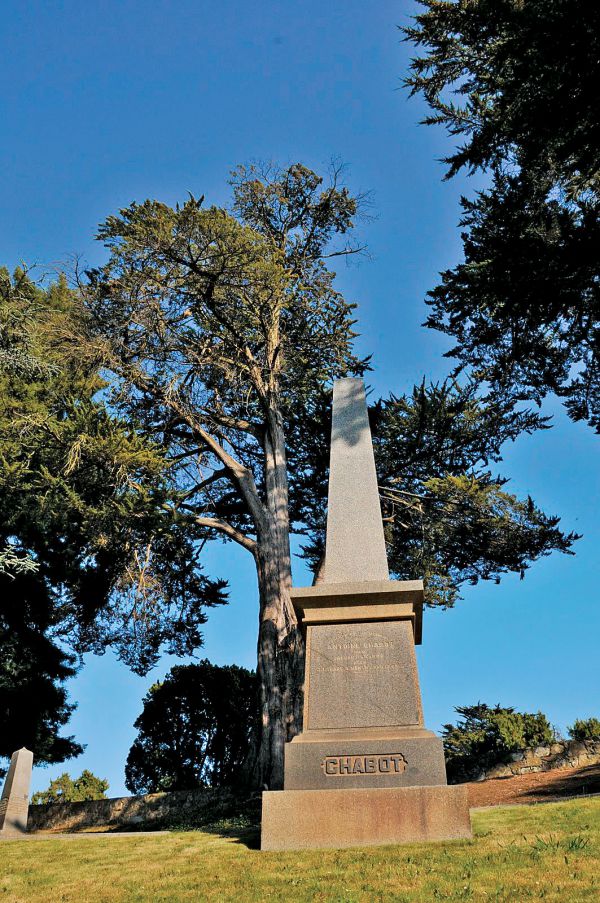
Anthony Chabot’s philanthropy in Oakland was extensive.
Chabot Observatory, Chabot College and beautiful Lake Chabot are just some of Anthony Chabot’s namesakes.
© Piedmont Funeral Services & Mountain View Cemetery | Oakland, CA - Funeral Home Website Design By Frazer Consultants & TA
